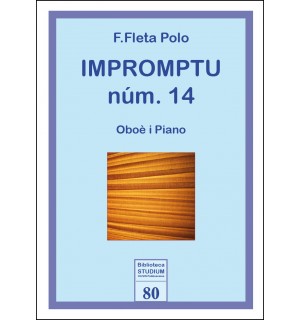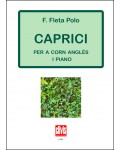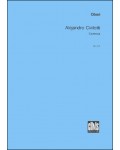
No products
Prices are tax included
Product successfully added to your shopping cart
There are 0 items in your cart. There is 1 item in your cart.
- English
- Castellano
- Català
Impromptu num. 14
S080
New product
Most of the more than twenty impromptus in Fleta’s catalogue are dedicated to string instruments but in this particular case the main protagonist is the oboe.
| Period | XXth Century |
| Instruments | Ob.pf |
| Pages | 24 |
| Time | 10 min. |
| Contents | Score and part |
| ISMN | 979-0-3502-1048-8 |
| Edition | Printed |
The first part of the Impromptu núm. 14 is like a perpetual, fast-paced movement with a playful character in which the rapport between the two performers is very demanding, with the oboe always in the sharp register, punchy and incisive. The central part is the one that allows the wind instrumentalist to shine more, with some very free passages. The recapitulation picks up the initial rhythm yet the end of the piece is resolved by disappearing into nothingness.
In the extensive chamber work output of Francisco Fleta Polo there are different works entitled Impromptu, Caprichoand Fantasia which all spring from the same motivation: they are works written from high to low, just as they appear, with no other pretention than to release the author’s need to make music for the instrumental combination he had before him and, above all, to satisfy the musicians to whom they are dedicated.
Most of the more than twenty impromptus in Fleta’s catalogue are dedicated to string instruments but in this particular case the main protagonist is the oboe. The chamber aspect, however, is a priority and the pianist also made a point of noting that the work was designed for both players to enjoy the music. Piano and oboe talk to each other and blend their voices in a lovely, high-spirited “musical moment”. The treatment of the two instruments is one of complete equals, not allowing either of them to take on the role of soloist, although there is a certain inclination in some passages to allow the oboe to shine more strongly.
David Puertas








